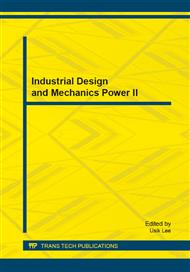p.634
p.639
p.643
p.650
p.655
p.659
p.663
p.669
p.674
Relative Distance-Based Forwarding Protocol for Underwater Wireless Sensor Networks
Abstract:
Underwater wireless sensor networks (UWSNs) have attracted significant research attention recently from both industry and academia. Due to the significantly differences from terrestrial wireless sensor networks, including slow propagation speed, high end-to-end delay, low available bandwidth, variable link quality and energy constraint, designing an efficient routing protocol for the underwater sensor networks is challenging. In this paper we devise a relative distance-based forwarding (RDBF) routing protocol, which always try to send the packets along an optimized path without constructing a communication path previously. To limit the scope of candidate forwarders and find the optimal relay, we utilize a fitness factor to measure and judge the degree of appropriateness for a node to forward the packets.
Info:
Periodical:
Pages:
655-658
Citation:
Online since:
October 2013
Authors:
Price:
Сopyright:
© 2013 Trans Tech Publications Ltd. All Rights Reserved
Share:
Citation:


